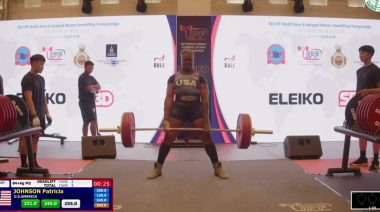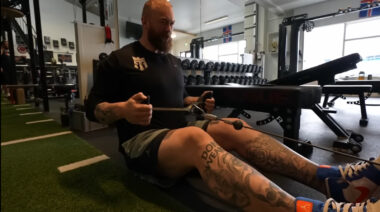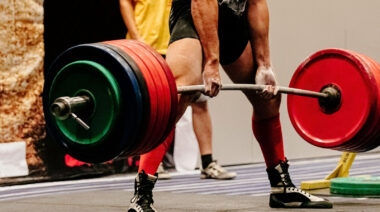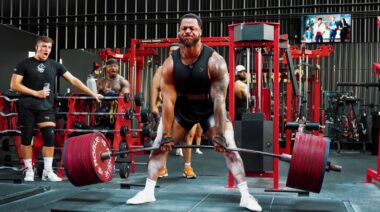This week I will return to Anatoli Chernyak’s work to take a further look at the relationships between the lifts and what they should be. I have discussed snatch and clean percentages in regards to squat and deadlift performances and given some figures to assist you in determining if your Olympic lifts are in line with your absolute strength lifts. While not specifically given in my previous article, it has been asked by some what the ratio of squat to deadlift should be. If you can snatch and clean so much, and you then can squat so much, how much should you then be able to deadlift given that squat?
Lifters like to know this. They want to lift in proportion in order to maximize totals or sport performance. They do not want to pursue a set of poundage goals that may not be helpful to their ultimate cause.
Many will look to the powerlifters for guidance. A common ratio advocated by many powerlifters is a 3:4:5 ratio in regards to bench, squat, and deadlift. I believe this is chosen more for numerical ease than any real analysis. Multiply those by one hundred and you get three highly desired centenary barriers chosen as ideal goals by most trainees in their intermediate years of training. It still works well for many even though the exact attainments don’t often match it exactly. But it comes pretty close. Close enough to use as goals and good for that sport.
There are variations of course. In many cases, meso- and endomorphic powerlifters in the heavier categories and football linemen tend to have higher squats proportionally. In contrast, more ectomorphic lifters tend to be better on the deadlift. Most powerlifters have shorter limbs so the 3:4:5 ratio would probably look more like 3:4.8:5 or some such.
But, the question is, does this work well for Olympic trainees? Before exploring this further, here is a reminder of the previously discussed ratios again. Assume the common 80% snatch to clean and jerk ratio.
- Snatch = 66-64% of the squat, 38-42% of the deadlift
- Clean = 80-84% of the squat, 54-56% of the deadlift
Below we see a chart showing maximum and minimum percentages for the squat and deadlift given a 100kg snatch and a 125kg clean and jerk:

From these we can extrapolate to a deadlift to squat percentage. The four percent variances in the lifts and their further variances with regard to the squat when extrapolated to the deadlift reveals that a deadlift can be 50-68% higher than the squat.
But what about those who specialize in the quick lifts, such as competitive weightlifters, football backfielders and CrossFitters? How does this compare to the ideal powerlifter ratios? Well, they don’t obviously. The figures shown in the box above are more like 2:3 instead of 4:5, a considerable difference. Are Chernyak’s figures wrong? Were they carelessly arrived at? On the surface many would think they were. But were they? I myself don’t think so.
In the first place, the squats referred to in Olympic lifting are high-bar ones that do not represent a lifter’s absolute maximum squat. Even as a separate distinct lift they are not the same as a power squat. Olympic lifting athletes do not usually concentrate on producing a maximum squat. They are content to do 30-40% over their clean and often for reps. They could easily train for more, but don’t.
Secondly, these high-bar squats should not be compared to a low-bar power squat, which has greater relative poundage potential. If we do, what we are comparing may not be an “apples-to-oranges” situation but more perhaps a “baking apples-to-dessert apples” situation. The lifts are similar but have different purposes. Their ratios will be different. Right from the start, the Olympic lifter’s squat starts from a lower base.
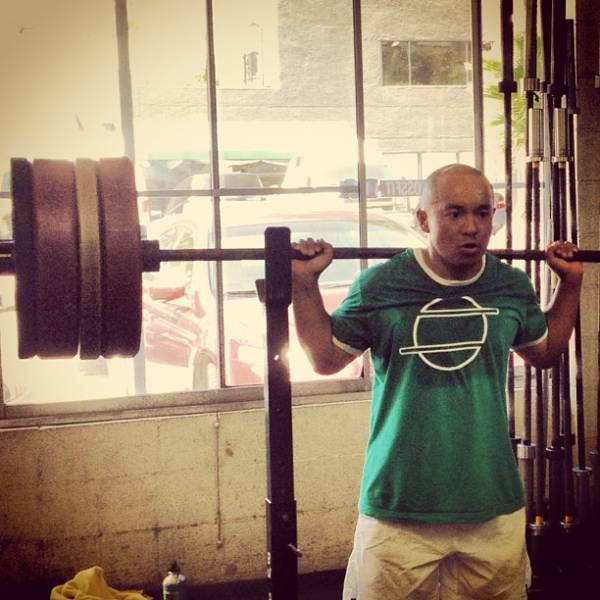
In the third place, looking at the deadlift, we again have different lifting parameters used by each type of lifter. The powerlifter will use an alternating grip on their maximum lifts to ensure their grip is as secure as possible. The Olympic lifter, if he does deads at all, will usually use a normal pronated grip in order to mimic the competition lifts. You cannot clean or snatch very well with an alternating grip (too bad). So this will affect the ratio as well. And, like the squat, the Olympic lifter will not usually be concerned with maxing out on the deadlift. They will be more interested in getting a somewhat faster lift-off and good positioning at the top of their pull, which will differ a bit from the power version.
Fourthly, we have to look at body morphology again. On the whole, Olympic lifters are usually more ectomorphic than powerlifters, so they will be better at the deadlift compared to the squat.
But why is the deadlift to squat ratio variance so high? We see that it can range from 150-168%, according to Chernyak’s figure. This is much higher than seen in almost any powerlifter, regardless of height, weight, or training emphasis. This can probably be explained by body morphology to some extent. Tall lifters will have a bigger ratio, short ones a lesser ratio. And, as we have mentioned also, the relative training emphasis that each lifter places on the two power lifts will also influence the ratio. Those who like to deadlift will have a higher ratio. Those who don’t will not.
It still should be remembered that even though Olympic lifters usually do fewer deadlifts, they still deadlift more in relation to their squats. This is mainly due to the fact that the two lifts are not done for maximum performances. They are assistance exercises only, usually with an emphasis on reps and technique. If Olympic lifters attempted to up their records in these lifts and could use the powerlifters’ tricks it is likely the ratios would change in favor of the squat.
The bottom line for Olympic-style trainees – whether competitive, CrossFitter, or otherwise – is that it is important to set your own goals for the proportions aimed among your various training lifts. They must be geared to the demands of your sport, not necessarily to an arbitrary one developed in another sport that may not be appropriate for you. Blindly following someone else’s goals could have dire consequences.
It behooves a trainee to track his relative performances – his sport performance (total or other measurement) and the training maximums and the relationships among them. This is why we like to keep training logs – and analyze them properly on an ongoing basis. Find out what percentages seem to work best in getting you to that performance level, and then try to keep these in proportion. But do not take even these as gospel, for even they may change over time as one climbs to higher performance levels.
References:
1. Chernyak, A. V., Methods of Planning the Training of Weightlifters, Moscow, FiS, 1976.

